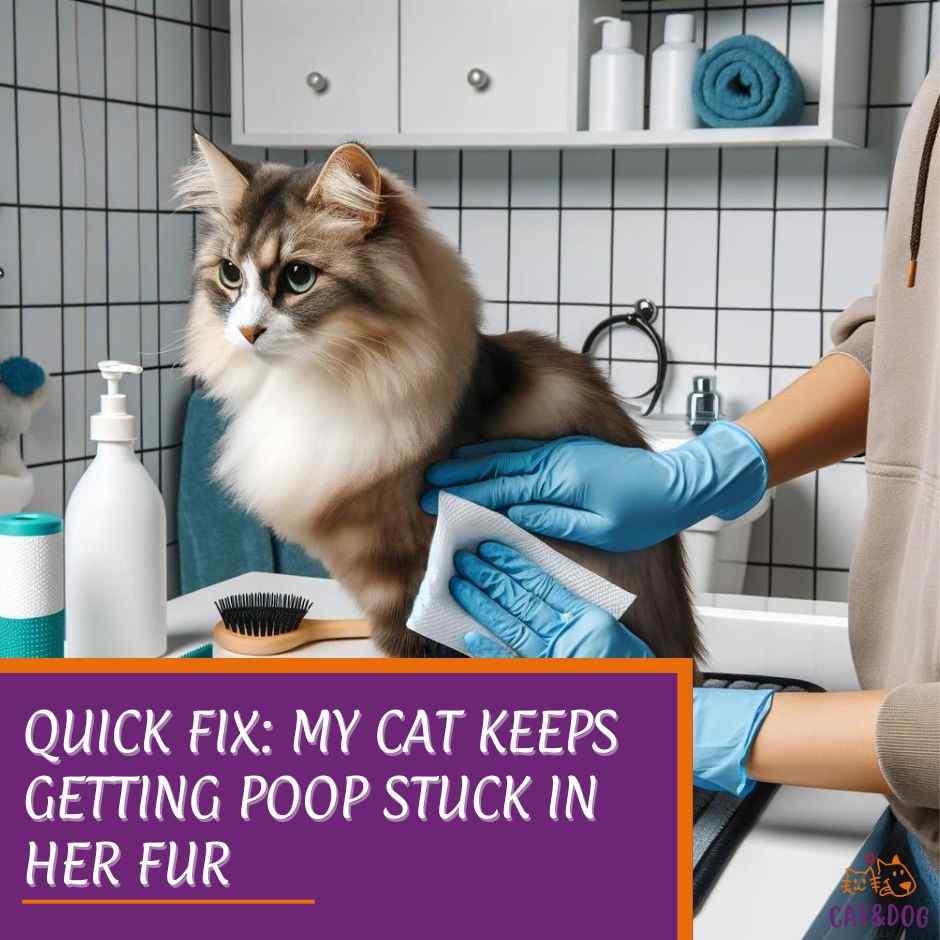If you’re a cat owner, you might have encountered the all-too-common issue of finding poop stuck in your furry friend’s coat. It’s an unpleasant situation, not only for you but more importantly for your cat.
“So, what should I do if my cat keeps getting poop stuck in her fur?” You ask?
This problem can cause discomfort and even health issues if not dealt with promptly and properly.
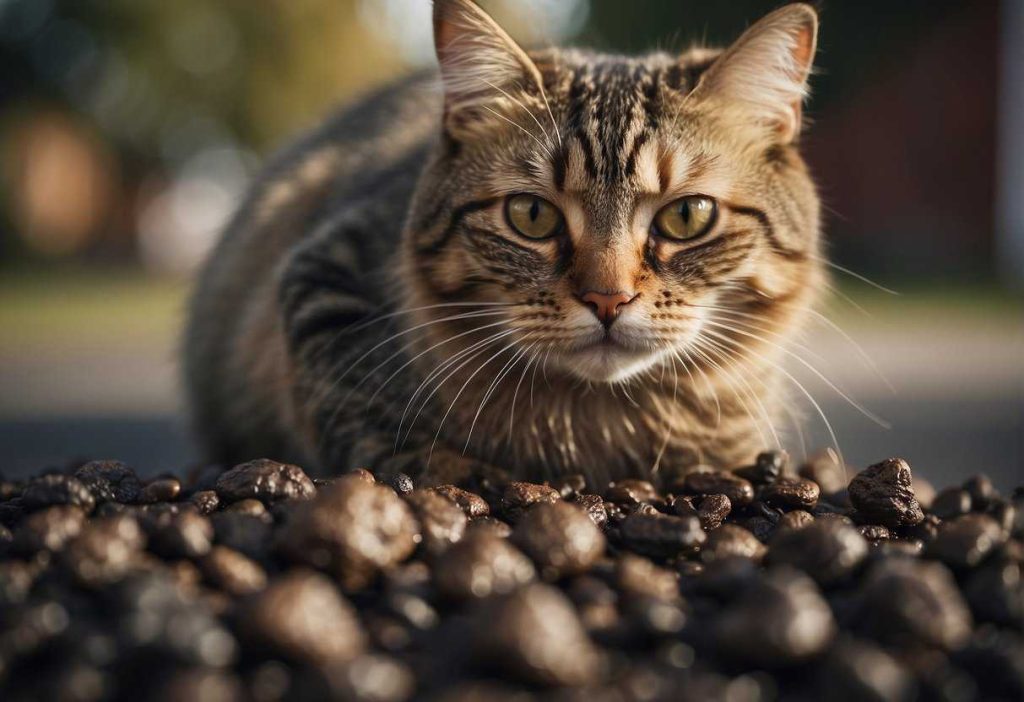
This grooming woe is usually seen in long-haired breeds but can affect any cat. It’s critical to address the issue quickly to prevent skin infections or other health complications.
Aside from the immediate need for cleaning, understanding why this is happening is crucial. Could it be a sign of an underlying health problem, or perhaps your cat needs assistance with grooming?
There may be several reasons behind this messy situation, ranging from diet to age-related flexibility issues.
Key Takeaways
- Immediate cleaning reduces health risks and discomfort for your cat.
- Identifying the cause is crucial for preventing future incidents.
- Professional advice can aid in managing the issue long-term.
My Cat Keeps Getting Poop Stuck in Her Fur: Immediate Cleaning Techniques
Poop trapped in fur is no laughing matter, especially if your cat has that gorgeous but oh-so-troublesome long fur that acts like a poop magnet. Don’t fret; let’s get your fluffy friend cleaned up swiftly!
Safe Removal of Fecal Matter
- Slow and steady wins the race. If the poop has hardened, you’ll want to gently trim the affected fur if possible.
- Slow and steady wins the race.
- Slow and steady wins the race. If the poop has hardened, you’ll want to gently trim the affected fur if possible. Tiny scissors are your friend here, but watch those wiggles!
- Is your cat prone to skin irritation or inflammation? If so, you’ll need to be extra gentle during the cleaning process to avoid further irritation.
Pre-cleaning Preparations
- Do your gloves and have clean, warm water ready.
- For those impatient kitties, prepare treats as a distraction.
- Grooming-resistant cats? No problem! Use a soothing voice and take breaks when needed.
Step-by-Step Cleaning Guide
- Dampen the soiled fur with warm water. If diarrhea is the culprit, this step helps loosen the mess.
- Apply cat-safe shampoo or a mix of water and mild dish soap.
- Comb the fur with a fine-tooth comb to remove clumps—mind the tangles!
- Rinse thoroughly to prevent soap residue, which could irritate.
- Gently towel dry the area or use a hairdryer on a low setting if your cat tolerates it.
Tailored Solutions for Unique Behaviors
- Struggling with a chunky monkey? Obesity or arthritis may hinder a cat’s self-grooming ability.
- Keep a closer eye on your overweight or longhaired cats to prevent repeat incidents.
- To avert gastrointestinal infection or parasitic infestation, maintain a clean environment and check with your vet for potential health issues.
- For constipation concerns, dietary changes may be in order, providing some relief for you and your cat.
Understanding Health Implications of My Cat

Risks of Untreated Fecal Mats
- Skin Infections and Parasites:
- Behavioral Changes and Comfort:
- Have you noticed any changes in your cat’s behavior? Fecal mats can be a great discomfort for cats.
- They might start avoiding grooming, become grumpy, or change their eating habits.
- Recognizing discomfort in your cat: Licking or biting at the affected area
- Vocalizing more than usual when touching the area
- Withdrawn behavior or hiding more often
Cats are clean animals by nature, and having poop stuck in their fur, also known as a rear-end issue, is a big deal for them.
Ignoring such conditions can not only harm their skin and attract unwanted guests like fleas, but it can mess with their mojo too! Being uncomfortable can make even the sassiest cat a bit moody.
If your pet is not overweight but frequently has poop stuck to its fur, we recommend taking it to the veterinarian to ensure there is no underlying issue that is causing this problem, such as an inadequate cat’s diet.
Understanding the best way to prevent this issue and the potential health implications of not addressing it, including potential problems with anal glands and allergies, is crucial for the well-being of your furry friend.
In addition, having fecal matter stuck in a cat’s hair, also known as fecal mat, can lead to matting, skin irritation, and potential health issues.
It is important to regularly groom and clean your cat’s hair, including the hair around their anus, to prevent any potential health issues caused by the fecal mat.
Regular grooming and cleaning of your cat’s hair, including the hair around their anus, can also help prevent discomfort and potential health issues for your furry friend.
By keeping your cat’s hair clean and free of fecal matter, you can ensure their overall health and happiness, and prevent any potential health issues caused by fecal matter in cats.
Additionally, regularly grooming and cleaning your cat’s hair can also help prevent any discomfort or potential health issues caused by fecal matter in cats, making it an essential part of your cat’s overall health and well-being.
Notice some changes? Your whiskered pal might be sending you signals that something is just not right.
Keeping an eye on these subtle hints can help you stay on top of your cat’s hygiene and overall well-being.
After all, a clean cat is a happy cat, and a happy cat means a happy you!
Professional Grooming and Veterinary Care
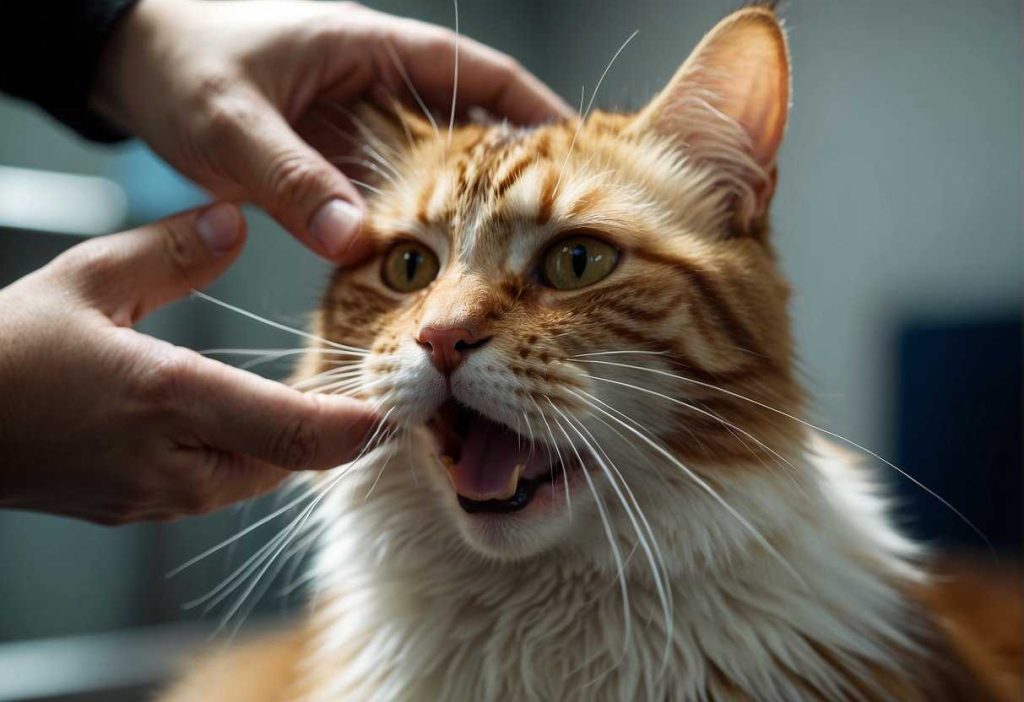
When to Seek Professional Help
Is your furry friend leaving unwanted surprises in their fur? Sometimes, despite our best efforts, home care isn’t enough. Look for these signs:
- Persistent Problems: If episodes of poop getting stuck are frequent and consistent.
- Skin Irritation: Redness or sores near the affected area suggest skin irritation. (3)
- Discomfort: They seem distressed or in pain during clean-up.
Tip: Don’t hesitate to reach out for professional help if you see any of these signs.
Choosing the Right Groomer For a Cat
Selecting a professional groomer or vet can be like finding a needle in a haystack. But worry not, here’s what you need to consider for the perfect match:
- Experience: Longstanding expertise in handling feline friends.
- Services Offered: Ensure they provide sanitary cuts or shaves for your cat’s behind.
- Reviews and References: Positive feedback from other pet parents can be telling.
Remember: A reputable groomer won’t mind answering your questions.
Signs You’ve Found the One
When you find a groomer who greets your cat by name and talks about their fur like it’s the finest silk, you know you’re onto a winner!
Checklist for Professional Services:
| Must-have Qualities | Why Important |
| Clean Facility | Prevents infections |
| Cat-friendly Staff | Reduces stress |
| Transparent Pricing | No nasty surprises |
Now, let’s tackle the problem and help your cat strut their stuff, sans the poop-troubles!
Causes and Risk Factors

Let’s break down why this might happen to your cat and what factors increase their risk.
Common Causes:
- Long fur: Cats with longer hair are particularly prone to this issue. The sheer length can trap feces more easily than in short-haired pals. (4)
- Mobility Issues: As cats age, arthritis or excess weight may limit their ability to reach and clean certain areas. (5)
- Diarrhea: If your cat’s stool is loose, it’s more likely to stick to their fur rather than make a clean getaway. (6)
Behavioral and Environmental Factors:
- Grooming Aversion: Some cats dislike the process of cleaning themselves. Stress, past trauma, or simply never learning proper grooming can be culprits. (7)
- Lifestyle Factors: Indoor cats may be more at risk if they have limited space or opportunities to remain active and healthy.
Here’s a simple way to look at it:
| Risk Factors | Why It’s a Problem |
| Long Hair | More surface area for feces to cling to |
| Mobility Issues | Less ability to reach and clean themselves |
| Diarrhea | Loose stool sticks to fur more easily |
| Grooming Aversion | Less frequent self-cleaning activity |
| Indoor Lifestyle | Less activity can lead to weight gain |
Behavior Modification for Grooming
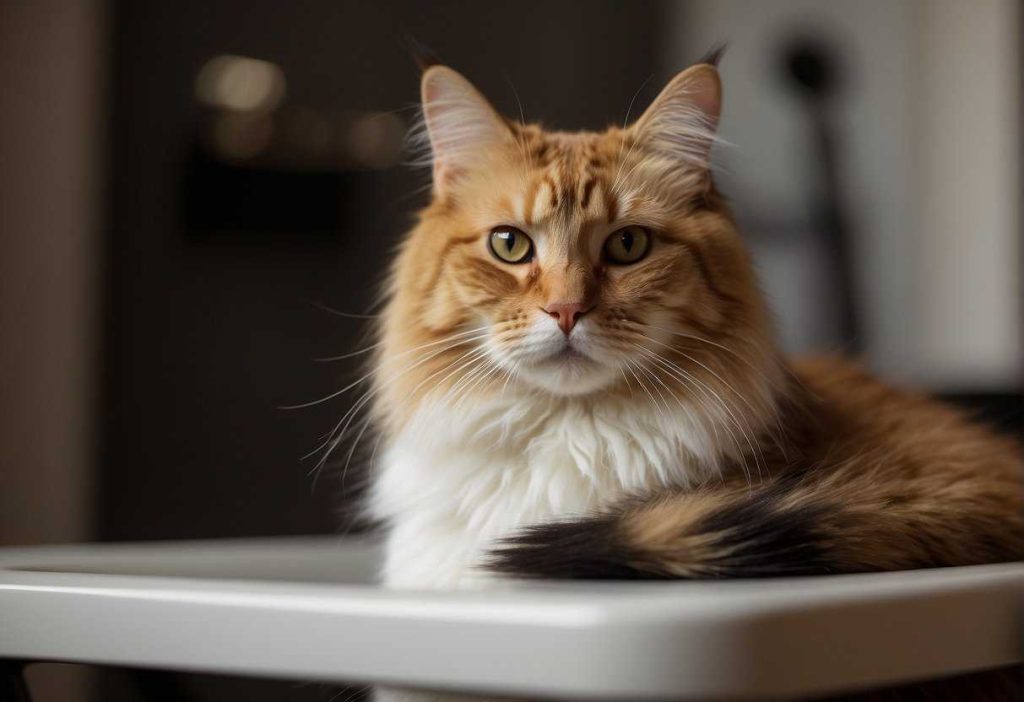
Acclimating Your Cat to Grooming: Patience is key. If your cat treats grooming tools like alien invaders, try this:
- Leave grooming tools around to sniff and inspect.
- Reward calm behavior around these tools with their favorite treats.
“Psst… what’s this weird thing? Oh, it’s a comb? Well, if it comes with treats, count me in!” – Your cat (probably).
Overcoming Grooming Resistance: Cats can be drama queens. But don’t worry, you’ve got this:
- Hold a brief petting session before grooming.
- Associate grooming with positive things – think treats or extra cuddle time.
A gentle approach wins the race. No cat likes to be forced into anything, right?
| Step | Tips |
| Start with Short Sessions | Keep it quick to avoid stress. |
| Use a Soft Voice | Calm tones soothe the savage beast. |
| Ensure Comfort | Comfy spots encourage cooperation. |
Your cat might act like the ruler of the household (are they wrong, though?), but with gentle persistence, they’ll come around.
Remember, if they’re more chilled out, grooming becomes a spa day rather than a battle of wills.
Lastly, ever tried making it fun? Yes, grooming can be a game! Reward them after and they might just start reminding you when it’s grooming time.
With your newfound grooming diplomacy, you’re on your way to a happier, cleaner kitty. Keep up the good work! 🐾
Incorporating Expert Insights
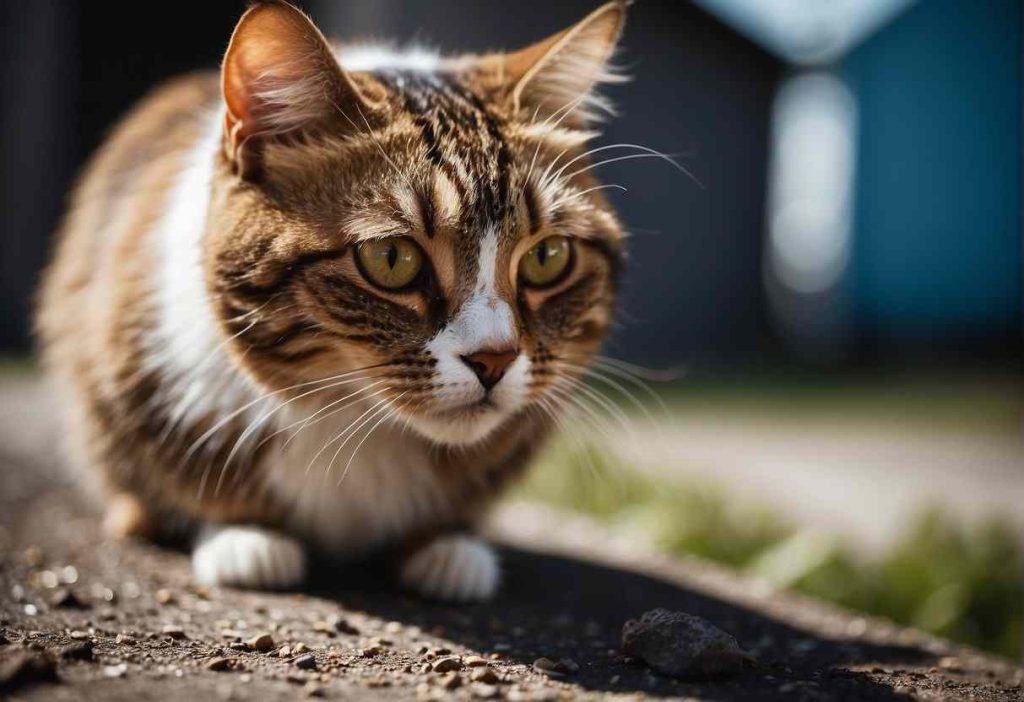
Let’s tap into some vet-approved advice and insider groomer techniques so you can handle these hairy moments with ease.
Vet-Approved Advice: Remember, your vet is your go-to for pet health!
- Diet Matters: Your cat’s diet plays a vital role. Sometimes, too much fiber leads to soft stools, or too little might lead to constipation, both causing a mess.
- Hydration: Ensure your cat drinks plenty of water. A hydrated cat is likely to have a healthier digestive system.
- Regular Check-ups: Get your cat checked regularly. Overweight cats or those with arthritis may struggle with grooming, leading to fecal matter getting trapped.
Tips and Warnings from Professionals:
- Clipping: Professionals often suggest keeping the hair around the rear trimmed short.
- Wait, don’t grab those scissors yet! Ask your vet or groomer for a safe “sanitary trim.”
- Be Gentle: If your cat experiences this often, be gentle. Continuous cleaning can cause skin irritation.
Groomer’s Techniques for Home Use:
- Brushing: It’s not just about cuddle time! Frequent brushing helps remove loose hair and prevent matting.
- Wet Wipes: Stock up on cat-friendly wipes for a quick clean-up. Always wipe away from sensitive areas.
And there you have it! With these expert insights, you’re better equipped to keep your cat clean and comfortable.
Remember, it’s not just about dealing with the poop problem – it’s about preventing it.
Stay observant, stay gentle, and when in doubt, talk to your vet or groomer. They’re the ultimate cat whisperers, after all!
Long-Term Management and Care
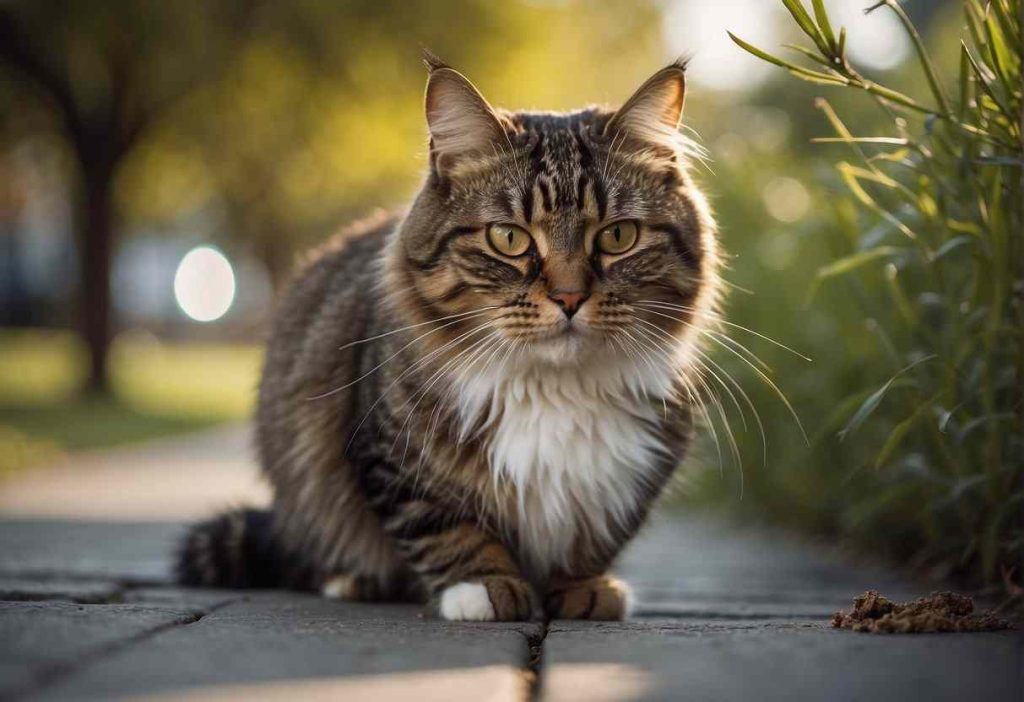
Developing a Comprehensive Care Plan
First, identify your cat’s grooming needs. Some cats may require more assistance than others, especially long-haired breeds or older cats that may not groom as effectively.
- Daily Grooming: Regular brushing can reduce the risk of poop getting trapped.
- Dietary Adjustments: Sometimes, softer stools can cling to fur. Ensuring your cat has a well-balanced diet can lead to firmer stools.
- Regular Vet Checkups: This can help catch any underlying health issues.
Integrating Grooming into Daily Routines
Brush your cat daily using the right tools:
- Brush type: Long-haired cats benefit from a de-matting comb or slicker brush.
- Routine Timing: Pick a time when your cat is calm and relaxed—perhaps after a meal or play session.
Monitoring and Adjusting Strategies
Keep a log of your cat’s grooming. Note what works and what doesn’t, adjusting as needed:
- Fur Length: If poop persists in sticking, consider a professional grooming trim around the rear.
- Reactions: Does your cat enjoy brushing? If not, you might need to introduce it slowly or try different brushes.
Keeping Track of Your Cat’s Grooming Needs and Preferences
Every cat is unique and so are their grooming preferences. Be attentive and patient.
A well-groomed cat is a happy cat, and you’ll be a less frustrated owner!
Remember, it’s about comfort—for both you and your feline friend.
By maintaining these simple habits, you can ensure that both cuddle time and your cat’s hygiene remain top-notch!
Quick Recap
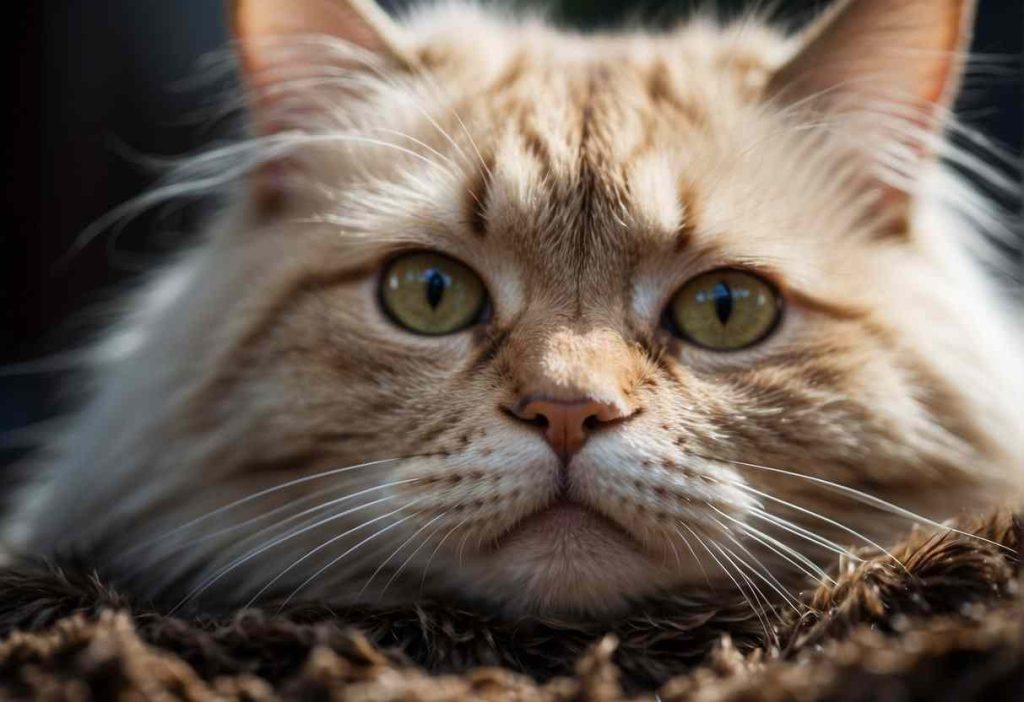
Have trouble with your kitty getting a little messy? Let’s brush up on what we’ve learned so far:
- Common Causes: Your cat’s diet, long fur, or health issues can contribute to this icky problem.
- Steps to Take: Check the Diet: Adjust if necessary, considering fiber content.
- Grooming Regularly: Keep that fur trimmed—especially around the posterior.
- Vet Visit: Rule out any health concerns.
You might be asking, “Why is this happening?” Well, every cat is different, but you’re not alone in dealing with this!
Remember, keeping your feline’s rear end clean is crucial for their comfort and health.
Noticed more frequent incidents or other symptoms? That warrants a vet checkup pronto!
Quick Tips:
- Diet Tweaks: Sometimes, less is more.
- Hygiene: A tidy bum is a happy bum.
- Be Observant: Keep an eye on the litter box.
Don’t fret; with a little effort, you can tackle this problem.
We’re here to help every step of the way!
Want more info? There’s an abundance of resources and fellow cat enthusiasts ready to lend a hand. Keep your spirits and your cat’s tail high!
Frequently Asked Questions
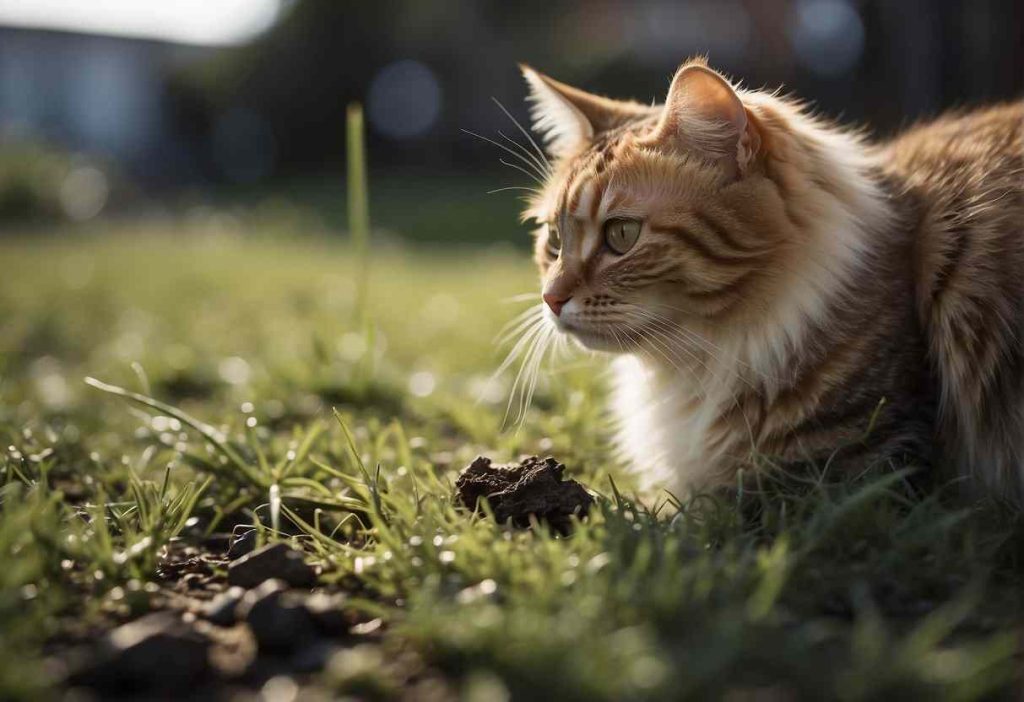
Encountering poop stuck in your cat’s fur can be distressing for both you and your pet. Here’s what to do and how to prevent it in the future.
What should I do immediately if my cat gets poop stuck in her fur?
If you find your cat with poop matted in her fur, gently wipe off as much as possible with wet wipes designed for pets or a damp cloth.
Be kind and soothing to keep them calm.
How can I prevent my cat from getting poop stuck in her fur again?
Keep your cat’s hindquarters well-groomed by trimming the fur short. Additionally, regular brushing helps to prevent fecal matter from clinging to fur.
What are the risks of leaving poop stuck in my cat’s fur untreated?
Leaving feces in your cat’s fur can lead to skin irritation, infection, and matting. It’s also uncomfortable and may cause your cat to groom excessively.
My cat hates water. How can I clean her without a full bath?
Use pet-friendly wipes or a damp towel with a bit of cat shampoo to clean the area. Dry shampoos designed for cats can also be a waterless option.
Can certain foods help prevent fecal matting in cats?
Feeding your cat a well-balanced diet with plenty of fiber can promote healthy digestion and firmer stools, reducing fecal matting.
Can anything be done to stop cat fecal matter from clinging to fur?
Regularly trimming the fur around your cat’s rear and maintaining proper hydration can help feces from sticking. Also, consider a diet change if the problem persists.
How often should I groom my long-haired cat to prevent fecal mats?
Long-haired cats should be brushed daily to prevent tangles and mats.
Pay extra attention to the hindquarters, especially if you’ve noticed fecal matter sticking before.

